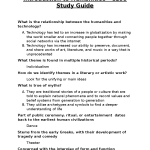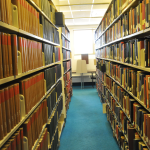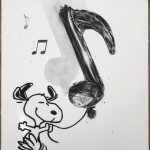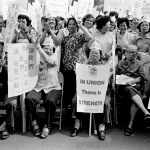The Harvard archives offer a fascinating glimpse into the cultural history of both Harvard University and America itself. Among the treasured historical documents housed within these storied collections lie letters from iconic figures such as John F. Kennedy and W.E.B. Du Bois, showcasing the institution’s profound connection to significant moments in history. These archives not only preserve vital narratives but also reflect the broader societal themes of their times, from race relations to political change. The items on display in the recent ‘Archives Inside Out’ exhibit highlight how such historical artifacts serve as vital touchstones for understanding our past. By exploring the myriad collections, visitors gain insight into the interplay between personal correspondence and monumental events that shaped both Harvard and the nation.
The collections within Harvard University’s archival repositories play a crucial role in documenting significant events and figures that have influenced societal dynamics over the decades. Featuring an array of personal letters and artifacts, these repositories encapsulate a wide spectrum of American history and thought leadership. For instance, the handwritten notes of renowned alumni not only tell their stories but also reflect the social contexts surrounding their lives and decisions. This interplay between individual narratives and collective history is what makes the archival collections so compelling. Overall, the Harvard archives serve as a dynamic resource for researchers and the public alike, bridging past and present through their rich offerings.
Exploring Harvard’s Cultural History Through Archives
Harvard University’s Archives serve as a rich resource, illuminating the cultural history of both the institution and the nation. The diversity of documents housed within, such as the correspondence from notable figures like John F. Kennedy and W.E.B. Du Bois, reflects significant historical moments in American society. These letters not only chronicle individual thoughts and ideas but also encapsulate the socio-political nuances of their respective eras, making Harvard’s archival materials essential to understanding the evolution of American history.
These historical documents, collected over generations, reveal a wealth of narratives that contribute to a deeper understanding of America’s cultural tapestry. For instance, Kennedy’s letter to his Harvard College classmates provides an intimate glimpse into the life and mindset of a future president during his formative years. Similarly, Du Bois’s correspondence about race relations engages with themes still pertinent today, highlighting the enduring legacy of these conversations and the importance of keeping them alive through archival preservation.
Rare Letters: Insights into Historical Figures
The letters preserved within the Harvard University Archives offer unique insights into the minds of historical figures and their contemporary societal contexts. The handwritten note from John F. Kennedy is more than just a personal correspondence; it touches upon themes of camaraderie and growth amid a backdrop of historical change. Such documents allow researchers and historians to piece together the personal motivations of influential leaders, broadening the narrative of their legacies beyond mere facts and dates.
Similarly, W.E.B. Du Bois’s letter to Albert Bushnell Hart is a significant artifact that underlines the importance of dialogue in shaping progressive thought during the early 20th century. The intimate exchange of ideas captured in these letters enriches our understanding of the period’s intellectual landscape, showcasing how personal and academic correspondence played a crucial role in social and cultural debates.
The Role of Women in Harvard’s Astronomical History
The photograph of a group of women computers at the Harvard College Observatory serves as a striking representation of women’s contributions to science at Harvard and beyond. This image shines a light on the often-overlooked roles women played in astronomy during a time when such fields were dominated by men. By documenting their meticulous work in cataloging stars, these women not only contributed to astronomical knowledge but also challenged gender norms of their era.
These historical records highlight the invisible labor that women have performed throughout academic history, paving the way for future generations of women in STEM fields. The archival preservation of such images allows us to recognize and celebrate these contributions, emphasizing the need for a more inclusive historiography that acknowledges the diverse narratives within Harvard’s academic achievements.
Understanding Race Relations Through Archival Correspondence
The correspondence preserved in the Harvard archives, particularly the letters discussing race relations, offers vital perspectives for contemporary discussions on equity and justice. The letter from W.E.B. Du Bois reflects intricate thoughts on racial dynamics, rooted in historical context while addressing a perennial issue in American society. By examining such correspondence, researchers and activists alike can glean lessons that inform current movements striving for equality.
Additionally, letters like that of Ragan Henry to Joseph Levow Steinberg provide personal insights into the lived experiences of individuals grappling with racial discrimination. These narratives facilitate a deeper understanding of the complexities surrounding identity and friendship in the face of societal challenges, serving as reminders that the fight for justice is an ongoing endeavor that connects past and present.
The Significance of Archivists in Documenting History
Archivists at Harvard play a pivotal role in curating and preserving not only the university’s history but also broader American history. Their work ensures that significant artifacts, such as the letters and memorabilia gathered for the ‘Archives Inside Out’ exhibition, are accessible to the public. As Virginia Hunt states, the goal is to demystify the archival process and celebrate the rich narratives that Harvard’s collections convey.
Through collective efforts, archivists contribute immensely to the preservation of cultural heritage, making historical documents available for study and reflection. The careful selection and display of items illustrate how archival work transcends mere cataloging; it is about telling stories that resonate with both the scholarly community and the public, fostering a greater appreciation for the past.
The Impact of COVID-19 on Harvard’s Archival Practices
The pandemic has significantly impacted how institutions like Harvard document history, as seen in the collection efforts surrounding events such as COVID-19. The screen capture of The Harvard Crimson from March 2020 exemplifies the archival response to unprecedented events, showcasing how digital tools are employed to preserve contemporary history. Through these practices, the archives become a living record of how the Harvard community responded to the challenges posed by the pandemic.
This adaptability in the face of crisis highlights the crucial role of archives in preserving and contextualizing modern narratives. By documenting ongoing events, archivists ensure that future generations will have a comprehensive understanding of this period, allowing them to learn from past experiences and bolster resilience against future challenges.
Unique Finds: Personal Connections to History
The unique finds within Harvard’s archives, such as the sketches from the Harvard Lampoon, illustrate the diverse facets of student life and creativity within the university. These artifacts capture the spirit of Harvard’s vibrant cultural scene, showcasing how student-generated content has played a role in the institution’s identity over time. Collectively, these items serve to bridge the gap between past and present, inviting viewers to explore the multifaceted narratives of Harvard’s student body.
Furthermore, such collections illustrate the importance of recognizing student voices in the historical record. By preserving these creative contributions, archives not only document institutional history but also celebrate the dynamic and ever-evolving culture shaped by students themselves. This ongoing narrative encourages current students to engage with their own histories, offering them a space to contribute to the university’s legacy.
Harvard University Archives: A Resource for Future Scholars
The Harvard University Archives provide invaluable resources for scholars looking to explore themes of cultural history and historical documentation. With its extensive collections, researchers can delve into various subject matters, from personal correspondence of influential figures to rich visual histories captured in photographs. The archival holdings present opportunities to interpret and analyze the past, making them imperative for academic inquiry.
Moreover, as archives increasingly digitize items for broader access, they become pivotal in expanding historical research, allowing for a global audience to engage with primary sources. This democratization of information ensures that diverse voices and perspectives are included in the historical narrative, fostering a more comprehensive understanding of both Harvard’s history and the larger American experience.
The Evolution of Archival Practices Over Time
Over the years, archival practices have evolved significantly, driven by the need to adapt to new technologies and changing societal contexts. Harvard’s approach to archiving, particularly in the wake of the digital age, underscores a commitment to preserving not only physical documents but also digital information that reflects contemporary culture. The integration of web archiving, as seen in the capture of The Harvard Crimson during the COVID-19 pandemic, showcases this transformation and highlights the importance of remaining relevant in an ever-changing landscape.
Modern archival practices also emphasize inclusivity, actively seeking to diversify collections by representing under-represented communities. By continually reshaping their strategies, archivists at Harvard play a crucial role in constructing a nuanced historical narrative that resonates with current societal values and concerns, ensuring that the archives remain a vital resource for future generations.
Frequently Asked Questions
What are the Harvard University Archives and what can I find there?
The Harvard University Archives is a repository of cultural history and historical documents related to Harvard University. Visitors can explore a rich collection of items, including letters from notable figures like John F. Kennedy and W.E.B. Du Bois, which provide insights into both Harvard’s history and broader American culture.
Why are historical documents like the John F. Kennedy letter significant in the Harvard archives?
Historical documents such as the John F. Kennedy letter are significant because they offer a personal glimpse into the lives and thoughts of influential individuals. These letters not only enrich the narrative of Harvard’s institutional history but also reflect wider societal issues and events, serving as vital resources for researchers and historians.
How does the Harvard University Archives preserve cultural history?
The Harvard University Archives preserves cultural history through meticulous archiving of diverse collections, which include personal letters, photographs, and artifacts. This process ensures that important historical documents, like the W.E.B. Du Bois letter, are maintained for future generations, highlighting the complexities of race relations and other cultural dynamics in America.
Can I access the historical documents in the Harvard University Archives?
Yes, the Harvard University Archives is open to the public, allowing visitors to access a wide range of historical documents. Researchers can view items from the collections, including unique artifacts such as letters from influential figures and materials on Harvard’s responses to contemporary issues, like the COVID-19 pandemic.
What types of artifacts can I find in the Harvard University Archives?
In the Harvard University Archives, you can find a variety of artifacts, including handwritten letters from historical figures (like Seamus Heaney and W.E.B. Du Bois), photographs of historical events, and documents reflecting significant moments in Harvard’s past, such as student publications and wartime narratives.
How do archivists select items for display in the Harvard University Archives?
Items for display in the Harvard University Archives are selected based on their historical significance and storytelling potential. Archivists consider factors like the item’s connection to Harvard’s history and its ability to engage audiences with narratives that illuminate both individual experiences and broader cultural themes.
What is the role of the archives in presenting stories like that of the Harvard pacifists during WWII?
The archives play a crucial role in presenting stories like that of Harvard pacifists during WWII by collecting and preserving first-hand accounts and narratives. This allows researchers and the public to engage with diverse perspectives and understand the motivations behind opposing military service, contributing to a comprehensive view of history.
How can I support the work of the Harvard University Archives?
You can support the work of the Harvard University Archives by visiting and engaging with the collections, participating in events like exhibits, or contributing to initiatives focused on preserving historical documents. Donations and volunteer efforts are also valuable in maintaining and expanding the archives’ resources for educational purposes.
What special events does the Harvard University Archives host?
The Harvard University Archives hosts special events such as exhibitions showcasing important artifacts from the collections, like the ‘Archives Inside Out’ exhibit, which features unique items that tell compelling stories about Harvard’s and America’s history and invites the public to explore these narratives.
How does the Harvard University Archives contribute to ongoing research?
The Harvard University Archives contributes to ongoing research by providing access to a wealth of primary sources. Scholars and researchers can utilize the historical documents and artifacts to support their studies on a wide range of topics, deepening the understanding of historical events and cultural practices associated with Harvard and beyond.
| Item | Description | Archivist’s Insights |
|---|---|---|
| Letter from John F. Kennedy to Harvard Class of 1940 | A draft letter providing a warm and amusing view from JFK to his classmates. | Found as a new archivist; offers insight into JFK’s personality. |
| Photograph of Women Computers at Harvard Observatory (1900) | Image depicting women cataloging stars, highlighting their contributions. | Reflects ongoing invisible labor women undertake in society. |
| Letter from W.E.B. Du Bois to Albert Bushnell Hart (1905) | Letter discussing race relations, showcasing diverse ideas and interactions. | Highlights extensive correspondence on significant historical debates. |
| Perpetual Calendar by Thomas Hill (1885) | A rotating wheel chart for determining New Year’s Day over centuries. | Demonstrates Hill’s inventive nature beyond traditional education. |
| The Harvard Crimson (March 2020) | Screen capture documenting Harvard’s response to the COVID-19 pandemic. | A snapshot of an unprecedented time using web archiving tools. |
| Sketches from the Harvard Lampoon (1882) | First donation accepted personally into the archives, highlighting student culture. | Represents a unique intersection of roles in managing archives. |
| Letter from Seamus Heaney to Helen Vendler (2006) | Lighthearted letter relating a personal emergency, showcasing personal connections. | Offers insight into relationships between academic colleagues. |
| Letter from Ragan Henry to Joseph Levow Steinberg (1953) | A personal letter discussing life experiences and racial discrimination. | Highlights the importance of personal narratives in archives. |
| Bound Typescript on Harvard Pacifists in WWII | Accounts of students opposing military service during WWII. | Illustrates archives as memory-keeping institutions for diverse stories. |
Summary
Harvard archives play a crucial role in preserving the narratives that shape both the University and American history. Through the ‘Archives Inside Out’ exhibit, Harvard archivists have highlighted unique artifacts that not only celebrate significant historical figures and events but also emphasize the ever-evolving nature of archival work. This initiative reflects a commitment to making history more accessible and relevant to contemporary audiences, offering insights into personal stories that resonate with today’s societal landscape.










